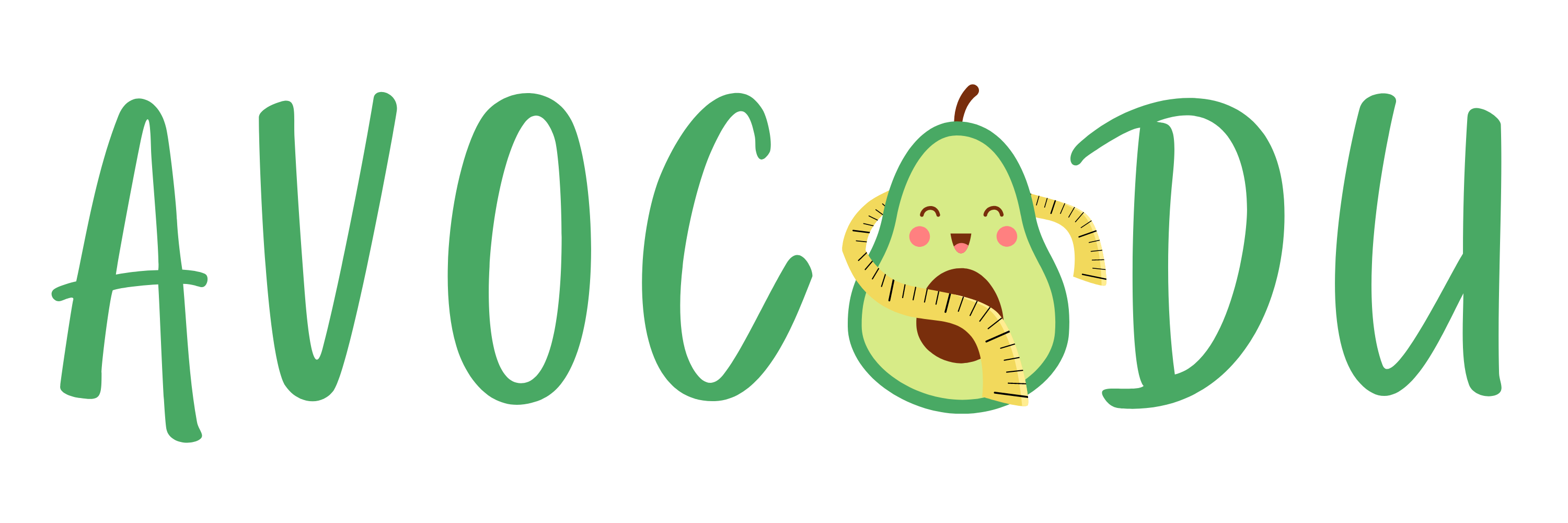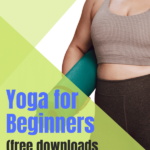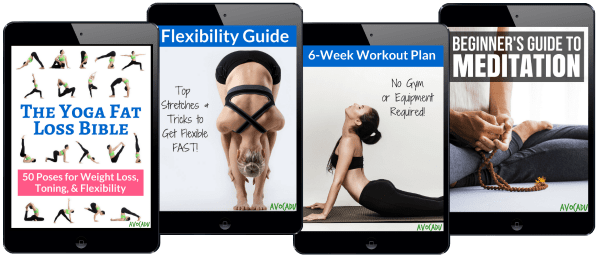Yoga For Beginners: 7 Essential Poses (PDF Included!)
Yoga is one of the most amazing activities you can do for your body, especially considering you don’t need gym, equipment, or any prior experience!
You’ve probably heard a similar pitch for yoga before and maybe even dabbled in a class here and there yourself.
But, what is it that’s really so great about yoga?
Isn’t it just a bunch of stretching and breathing?
Yes… but it’s so much more than that.
Yoga is also one of the best workouts out there for weight loss — IF you do it correctly.
Before we dive in, make sure grab our FREE yoga downloads (for beginners + weight loss)!
This post may contain affiliate links, which helps keep this content free. Please read our disclosure for more info.
Just a few of the benefits you’ll enjoy by doing yoga are:
- You’ll notice an increase in flexibility and improved athletic performance.
- Your mental health will improve and you’ll have a decrease in stress.
- Your muscle tone and strength will increase, and your posture will improve.
- You circulatory health and cardiovascular endurance will improve (No more panting as you try to climb the stairs or walk from the car to the store).
- Our personal favorite – you’ll enjoy a decrease in weight and inches.
As you can see, there are TONS of wide-ranging benefits of yoga that other fitness activities don’t provide.
So, how can I get started!?
The poses below are all located in our FREE yoga guides, so make sure to download that so you can access them on a mobile device or tablet when you’re ready to practice!
Yoga for Beginners – 7 Essential Poses
The daily maintenance of health can be simple.
Even if you don’t have much time, you can begin working on your weight loss goals with some of the basic poses below.
Vajrasana (Thunderbolt Pose)
Vajrasana, or the Thunderbolt Pose, is a simple seated posture done with the knees and feet together and the sit bones placed directly atop the heels.
This is an ideal posture for aligning the spine, practicing deep full breathing, and calming the mind.
Other benefits of the pose include stretching the ankles and knees, invigorating the circulation of blood and synovial fluids in these joints, and maintaining flexibility.
Practice for up to five minutes, coming out of the posture intermittently if the knees, ankles, or feet are stressed. You may also sit on a prop such as a block, folded blanket, or pillow.
Adhomukhasvan Asana (Downward Facing Dog Pose)
This classic posture, which most students practice in vinyasa-style classes, is perhaps the ideal full-body stretch.
The body is in the shape of an inverted “V,” the tailbone being the highest part of the body and the weight of the body being evenly distributed between the hands and feet.
The heart is above the head, which provides the benefits of a gentle inversion.
This is a grounding pose which is especially stimulating for the first and second chakra.
The ribcage is also stretched open fully, making breathing it’s most free and powerful.
Beginning students can find this pose hard work as they search for flexibility and alignment.
However, with practice, this pose becomes as restful as Child’s Pose and Corpse Pose.
Eka Pada Rajakapotasana (Pigeon Pose)
A deep hip stretch is powerful and pleasing for a yoga student of any level.
Though this pose has many variations and levels of difficulty, a passive or yin approach can produce a very effective stretch.
One knee is bent so that the foot comes in front of the hip of the opposite leg, and the knee rests on the mat; the opposite leg extends behind the body.
Let the bent leg rest naturally without forcing the angle and stressing the joints, then let the torso relax over the leg.
As you breathe deeper into the stretch, you can gently use a hand to increase the angle of the bent leg and intensify the stretch.
Keeping the hips flexible can lessen lower back pain, improve posture and balance, and reduce the risk of injury in this area.
Chakravakasana (Cat-Cow Pose)
This is a simple set of poses that gently strengthens the core while stretching the arms, stomach, and back.
While this set is often used to warm up for a longer, more intense yoga practice, it can also be used as an introduction to more challenging core-strengthening yoga poses.
To assume the pose, begin on your hands and knees, with your hands spread wide and toes tucked.
Make sure that your knees are hip-distance apart and directly under your hips, and that your wrists are directly under your shoulders.
As you inhale, sink your stomach toward the ground while lifting your chest and head into the air; this is Cow Pose.
As you exhale, push into the floor and arch your back, drawing the navel in toward the spine for Cat Pose.
Continue to alternate between the two poses along with your breath, keeping your limbs and core strength.
Halasana (Plough Pose)
The upper back holds so much tension that its release is essential to the maintenance of the body and mind.
The legs come over the head in this pose, and the weight of the body rests on the shoulders and the back of the head.
Remember to keep the cervical vertebrae lifted by tilting the chin up and keeping the shoulder blades close together.
This is among the best yoga poses to relieve stress, anxiety, and depression.
It teaches us to breathe into the back body and belly, rather than only in the upper chest.
Phalakasana (Plank Pose)
This is a great yoga pose for core strength that is often included in vinyasa flow sequences like sun salutations.
It is easy enough that most people will be able to hold the pose for a few seconds, but challenging enough that extended time in this pose can be a good core workout.
This core-strengthening yoga pose is basically the position your body would take at the top of a push-up.
Place your shoulders over your wrists, with your arms about shoulder-width apart and your fingers spread.
Your legs and back should be straight behind you; keep your leg muscles engaged, and resist bending your back too much to achieve the best core-strengthening results.
Savasana (Corpse Pose)
The classic resting pose, done at the end of any practice, is difficult to remind ourselves to practice.
Even if for a moment, give yourself a few breaths in this pose.
Remember that you are perfect at that moment simply breathing, which is the most important things we do and our deepest connection to the life around us.
Looking For More Yoga Poses For Beginners?
You can find even more poses in our yoga for beginners PDF – Sign up for your free yoga guides here.
If you want to start a regular yoga practice, but don’t quite know how to get started, you should check out our Yoga Fat Loss Bible for Beginners!
You don’t need a gym membership or fancy, expensive equipment; and there are no crazy pretzel poses!
It’s a great solution for those looking to lose weight, get more flexible, and relieve aches and pains with a calm yoga practice. It also comes with a free meditation guide for beginners that will help you let go of your worries and relieve stress and anxiety.
It has detailed instructions and beginner modifications for your practice + a 6-Week Workout Plan any beginner can start with!
You can check it out by clicking here!
Always remember that the most difficult part of doing yoga is SHOWING UP. Make sure to show up today and give your best to these exercises. You deserve it!
If you enjoyed this article on yoga for beginners or have any questions for us, please leave them in the comment section below!


